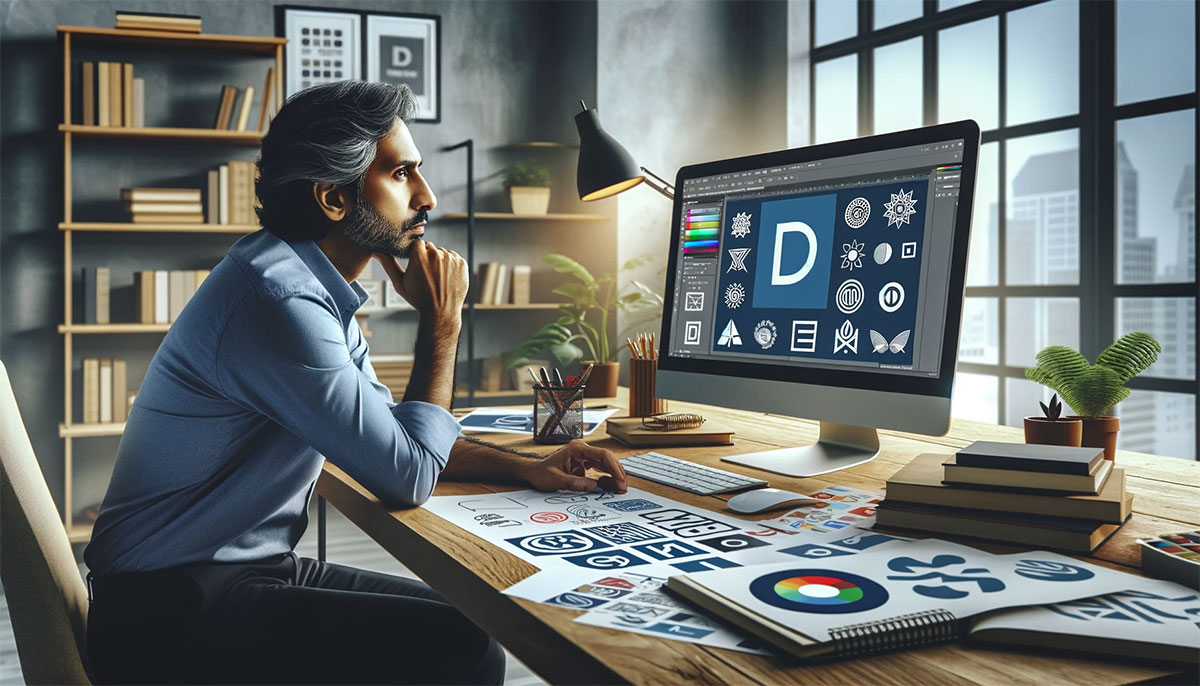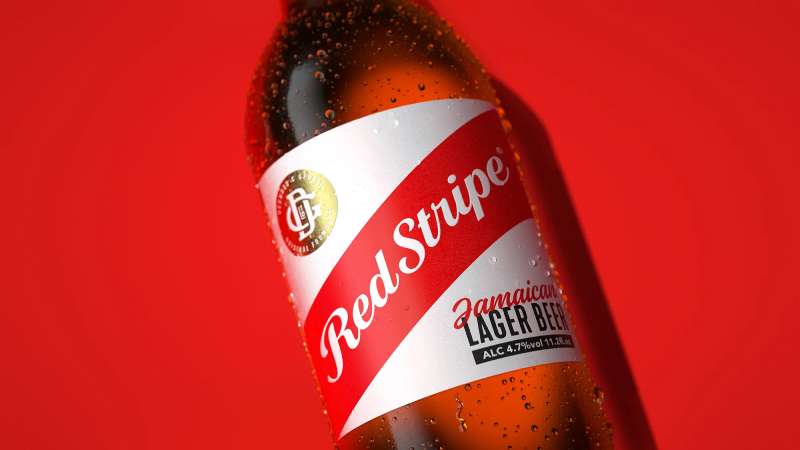How To Copyright A Logo: A Guide For Designers

Imagine you’ve just crafted the perfect logo, a visual masterpiece that captures your brand’s essence. It’s unique, eye-catching, and distinctly yours. But here’s the kicker: How do you ensure it stays that way? How to copyright a logo – this question isn’t just a formality, it’s a safeguard for your creative identity.
In the swirling world of intellectual property rights, understanding the nuances between copyright protection and trademarking is crucial.
This article is your beacon, guiding you through the often-misunderstood terrain of logo registration process, intellectual property law, and ensuring your design ownership remains unchallenged.
By the end, you’ll navigate the copyright application like a pro, equipped with insights into branding legalities, and the know-how of preventing plagiarism in design.
We’ll delve into:
- The essentials of copyright and its application to logos.
- The interplay between copyright and trademark in the realm of branding.
- Practical steps to legally protect your logo.
Understanding Copyright and Trademark Differences
Distinction Between Copyright and Trademark
Let’s dive in but first, a bit about copyright and trademark.
They’re like cousins in the family of protecting your creative work, each with its own vibe. Copyright is all about your logo’s unique design.
It’s like claiming, “Hey, this awesome design is mine!” It protects your logo’s artistic side, ensuring no one just copies your hard work.
Trademark, on the other hand, is like your logo’s bodyguard. It’s not just about looks; it’s about identity and reputation.
Trademarking your logo means you’re protecting your brand’s face in the business world. It’s saying, “This symbol stands for my brand and nothing else.”
What is copyright?
Copyright is a legal right granted to creators of original works, like writings, music, and art, protecting them from unauthorized use. It allows the creator to control how their work is used, reproduced, and distributed, typically for a limited time, ensuring they receive credit and potentially financial benefit from their creations.
What is a trademark?
A trademark is a symbol, word, or phrase legally registered or established by use, representing a company or product. It identifies and distinguishes the source of goods or services and protects against misuse or copying, ensuring a brand’s uniqueness and integrity in the market. Trademarks are crucial for brand identity and consumer trust.
When to Use Copyright vs. Trademark
Scenarios for copyrighting a logo
- You’ve designed a logo and want to ensure no one else can use that exact design.
- Your logo is part of a bigger creative project, like a brand’s visual identity.
Scenarios for trademarking a logo
- Your logo is ready to hit the market, representing your brand or products.
- You want to make sure your customers recognize your logo and don’t confuse it with others.
Steps to Copyright a Logo
Creation and Originality
When you’re on the path of how to copyright a logo, first ensure it’s like no other. Originality is key.
Designing a unique and original logo

It’s about making your logo stand out. It shouldn’t just be another apple in the orchard; it should be the one that makes people stop and stare.
Ensuring the logo meets creativity criteria
Is your logo more than just a name in a fancy font? Does it have a unique twist? That’s what we’re looking for.
Proving Ownership and Date of Creation
This part is like setting your flag on the moon, saying, “I was here first.”
Methods to establish ownership
- Document your design process, maybe keep those sketches or digital drafts.
- Consider using services like Creative Commons for extra proof.
Importance of documenting the creation date
Marking the calendar is crucial. It’s like having a time-stamped selfie with your logo, showing when it was born.
Registering the Copyright
Preparation for Registration
Think of it like getting ready for a big trip. You wouldn’t just hop on a plane without packing, right? Same deal here.
First up, gather all your stuff.
This isn’t just about grabbing your logo and running. You need the whole story: sketches, digital files, maybe even those napkin doodles where it all started. It’s like making a scrapbook of your logo’s journey.
Next, do a bit of detective work. Check if there are similar logos out there. It’s like scanning the beach with a metal detector, making sure you’re the only one planting your flag.
Filing the Copyright Application

Picture this as your moment on stage, spotlight and all.
Filing the application is like telling the world, “Hey, this masterpiece is mine.” Fill out those forms with all the details. It’s not just paperwork; it’s the story of your logo.
And yeah, there’s a fee. Think of it as an investment in your brand’s future. It’s like buying a fancy lock for your treasure chest.
Fees and timelines for registration
So, about those fees and timelines. Patience is key. It’s not like instant noodles; it takes time for the whole process to cook.
Expect a few weeks, maybe months, before you get that golden ticket saying your logo is officially copyrighted.
Legal Protection and Enforcement
Benefits of Registering a Copyright
Now, why go through all this hassle? Simple: Protection. It’s like having a superhero shield for your logo.
No one can use it without your say-so. Plus, if someone tries to copy your design, you’ve got legal power to back you up.
Legal protections afforded by copyright
This is like having an invisible force field around your logo. If someone tries to snatch your design, you’ve got the law on your side.
Advantages in case of infringement
And if someone dares to use your logo without permission, you’re not just standing there with a water gun.
You’ve got the legal artillery to take action. Copyright gives you the right to sue those copycats and protect your brand.
Enforcing Copyright Rights
So, how do you keep an eye on your logo? Stay vigilant. It’s like having a security camera on your design.
Monitoring and identifying infringements
Keep an eye on the market. If you see something fishy, like your logo on products you didn’t approve, it’s time to act.
Legal actions and remedies against infringement
If you find someone using your logo without permission, it’s not just about sending a stern email. You can take legal action.
Lawyers, courtrooms, the whole deal. It’s about defending your creative territory.
Additional Considerations
Artistic Logos and Dual Protection
Sometimes it’s a piece of art. And guess what? It might need double armor – copyright and trademark.
Imagine your logo is like a superhero. By day, it’s protected by copyright (guarding its unique design), and by night, it’s under the watch of trademark law (keeping your brand identity safe).
When a logo can be both copyrighted and trademarked
Your logo might be a stunner, a real piece of artwork. In cases like these, copyright keeps its artistic side safe.
But when it steps out as the face of your brand, that’s where trademark comes in. It’s like having two layers of armor, each for a different battle.
Process and benefits of dual protection
The process? A bit like running a marathon and then a sprint. It’s two separate races, but both lead to the same finish line – total protection.
And the benefits? Huge. It’s like having a security guard and a personal bodyguard for your logo.
Common Misconceptions and Pitfalls
Misconceptions about copyright and trademark

One big mix-up is thinking copyright and trademark are the same. Nope, they’re like apples and oranges – similar but different.
Copyright doesn’t automatically mean your logo is safe from all sorts of misuse.
Common pitfalls in the copyright process
It’s easy to stumble in this journey. Maybe you forget to check if your logo looks like someone else’s, or you think once you file the paperwork, you’re done.
Staying sharp and informed is key.
Renewal and Maintenance of Copyright
Duration and Renewal of Copyright
So, how long does this shield last?
The duration of copyright protection for any given work is influenced by various factors, such as its publication status and the date of first publication.
Typically, for works produced after January 1, 1978, copyright extends throughout the author’s lifetime and continues for 70 years after their death.
Lifespan of a copyright
Think of it like a long-term lease. It’s yours for a solid chunk of time, but not infinite. The clock starts ticking from the moment you create that logo.
Process and importance of renewal
When the time comes, renewing is like renewing your driver’s license. You don’t want it to expire and leave your logo unprotected, right? Stay ahead of the game.
Updating Copyright Information
Life’s all about changes, and so is your logo’s journey.
When and how to update registered information
Maybe you tweak your logo a bit, or your brand takes a new direction. Keep your copyright info up to date. It’s like updating your address after you move.
Implications of changes in logo design
Changing your logo isn’t just a fresh coat of paint. It can affect your copyright. Think of it like a domino effect – one change can set off a whole chain reaction.
FAQ On How To Copyright A Logo
What’s the First Step in Copyrighting a Logo?
Start by ensuring your logo is unique and original. It’s like planting your own flag in the design world. Your logo should not only be distinctive but also meet creativity criteria. It’s the first checkpoint in the journey of how to copyright a logo.
Can I Copyright a Logo Myself?
Absolutely! You can do it solo. Gather all the necessary info about your logo, like design drafts and creation date.
It’s like putting together a puzzle – each piece is crucial. Then, file the copyright application. It’s a DIY project with legal flair.
How Long Does the Copyright Process Take?
Patience is key. Think of it like slow-cooking a gourmet meal. It can take a few weeks to several months.
This timeline depends on factors like application accuracy and the workload of the Copyright Office. It’s a waiting game, but worth it for your logo’s protection.
Is Copyrighting a Logo Expensive?
It’s not pocket change, but it’s an investment in your brand’s future. Fees vary, but consider it like buying a high-quality lock for your most valued possession.
It’s a cost that brings peace of mind, knowing your creative work is safe.
How Do I Know if My Logo Can Be Copyrighted?
Your logo needs to be more than just a name in a fancy font. It should have a unique artistic touch.
Think of it as your logo having its own personality. If it meets these creativity criteria, you’re in the clear.
What Happens if Someone Copies My Copyrighted Logo?
Here’s where your legal muscle flexes. You can take legal action against the copycats. It’s like having a bodyguard for your logo.
With copyright, you have the right to sue and defend your brand’s identity.
Can I Copyright a Logo That’s Similar to Another?
Be careful here. If your logo is too similar to another, you might hit a roadblock. It’s like trying to enter an exclusive club wearing someone else’s outfit.
Your logo needs its own unique identity to qualify for copyright.
What’s the Difference Between Copyrighting and Trademarking a Logo?
Think of copyright as protecting your logo’s artistic side, and trademark as its business armor. Copyright guards the visual, creative aspect.
Trademark shields its use in commerce, like a knight protecting a kingdom’s flag.
Do I Need a Lawyer to Copyright My Logo?
Not necessarily, but it can be helpful. It’s like having a guide in unfamiliar territory. A lawyer can navigate the legal nuances and paperwork.
But if you’re confident and well-informed, you can embark on this journey solo.
How Often Do I Need to Renew My Logo’s Copyright?
Good news: It’s a long-term deal. Once you’ve got it, it lasts for your lifetime plus 70 years. It’s like a lifelong membership that even extends beyond. No renewals needed, just ongoing protection for your creative masterpiece.
Conclusion
Wrapping it up, diving into how to copyright a logo is like embarking on a crucial mission to safeguard your creative identity.
It’s not just about slapping a legal tag on your design; it’s about giving it a shield, an armor against the world’s copycats.
- Remember the key steps: ensuring originality, registering the design, and being prepared for legal enforcement.
- Keep an eye on details: like understanding the subtle dance between copyright and trademark, and the importance of intellectual property rights in the branding universe.
- Stay informed: about the misconceptions and pitfalls. It’s a landscape that’s ever-evolving, like technology itself.
Your logo is more than just a graphic; it’s a representation of your brand, your story.
Protecting it is not just a legal requirement; it’s a commitment to your brand’s integrity. So, take these steps, wear this knowledge like a badge, and step into the world confidently, knowing your logo is not just seen but also secured.
If you liked this article about how to copyright a logo, you should check out this article about what is rebranding.
There are also similar articles discussing how to create a brand identity, how much a logo costs, brand typography, and logo design psychology.
And let’s not forget about articles on how much is the Nike logo worth, what makes a good logo, why a logo is important, and why is there a bite in the Apple logo.
- The Red Stripe Logo History, Colors, Font, And Meaning - 9 May 2024
- Tie the Knot: Romantic Wedding Color Palettes - 9 May 2024
- Game Show Typography: What Font Does Jeopardy Use? - 9 May 2024









